Katarniaghat Wildlife Sanctuary is a secret lurking in the Dudhwa Tiger Reserve that can be a more than suitable comfort for wildlife lovers and nature admirers. The sanctuary is situated in the state of Uttar Pradesh and is located on the bank of Girwa River, and it is a mix of grassland, wetland, and more dense Sal forests. Whether it is a wildlife photography enthusiast, a bird watcher, or a nature-loving adventure seeker, Katarniaghat is the right destination to have a lifetime experience of a jungle safari.
Herein we have outlined the best 7 animals to see in your wildlife jungle safari in Katarniaghat and guide you with the best areas and time to view them.
1). Royal Bengal Tiger
There is no doubt that the most popular species in Katarniaghat is the great Royal Bengal Tiger. Tiger sighting needs time and blood, but it is easy to spot a tiger in the early mornings and late afternoons. Kakraha and Motipur ranges are some of the tiger hotspots because they are very dense forests with high prey.
Best Time to Spot: February to May
Safari Tip: Look out to see pugmarks and alarm call of deer or langurs, which would be the best signal of a tiger nearby.
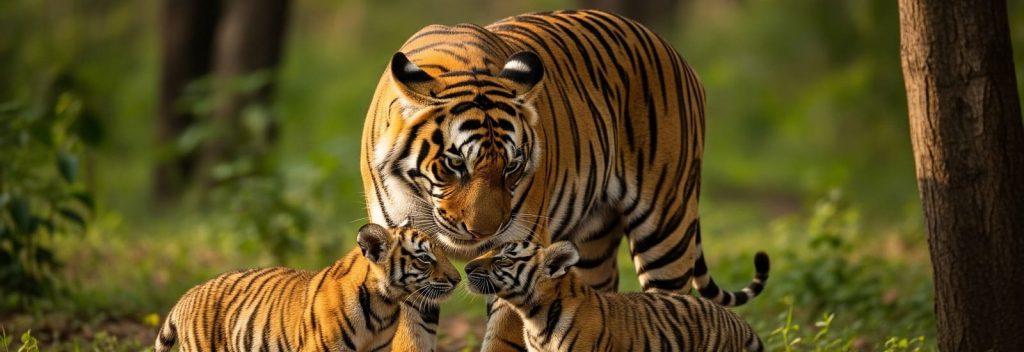
2). Gharial
The critically endangered species of crocodilians, the Gharial, is a major attraction of the Boat Safari on the Girwa River. Katarniaghat is among the few gharial conservation sites in India where gharials survive effectively. They have their long and thin snouts and thus are interesting to look at.
Best Watching Territory: Girwa River (Boat Safari)
When to See: morning boat trip, October through April
Fun Fact: Mugger Crocodiles are also being supported in the sanctuary and often sunbathe alongside gharials.

3). Swamp Deer (Barasingha)
Katarniaghat forms one of the remaining bastions of the Barasingha, the Swamp Deer. They are slender herbivores that specifically live in marshy grasslands, whose distinctive characteristic is their antlers that come with over a dozen tines.
Better viewing Area: Wetlands and open meadows within the Kakraha range
Best Time to Spot: November to March
Safari Tip: You have a higher probability of seeing herds in the open during early morning safaris.
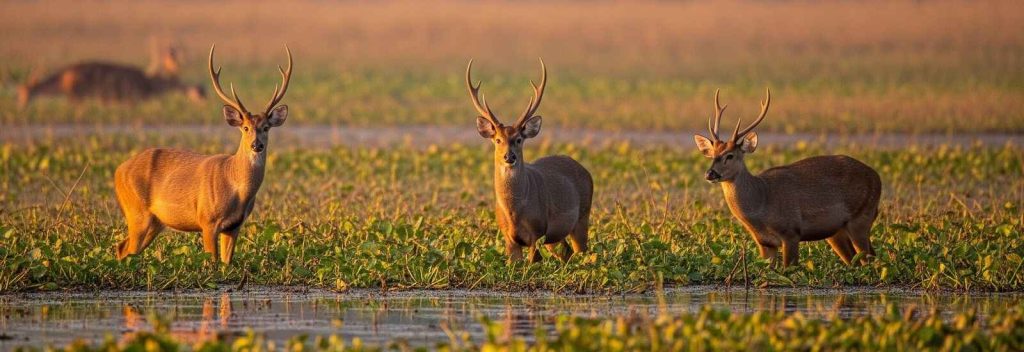
4). Asian Elephant
The Asian Elephant is quite prevalent in Katarniaghat, which has dense forests. They are social animals and can be spotted in groups of these gentle giants. They might be difficult to notice than other species, but they can be easily identified through features such as broken tree branches and fresh dung.
The best viewing areas are Motipur and Kakraha forest tracks.
Best Time to Spot: June (pre-monsoon) and after-monsoon (such as October) months
Safari Tip: Don’t come too close – Hark to the rustling in the undergrowth or the far-off call of the trumpet.
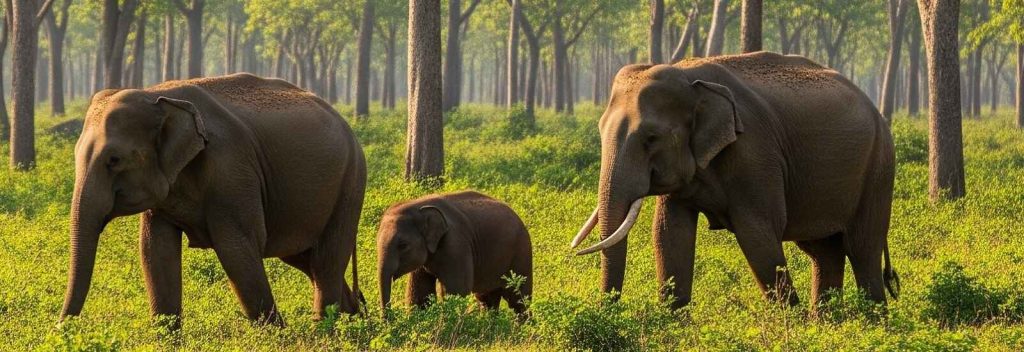
5). Indian Rock Python
One of the more elusive animals within the sanctuary is the Indian rock Python. They are huge, harmless snakes, and they are usually located beside rivers and wet areas. They are an exciting addition to a jungle safari, and even though sightings are not commonly seen, it is a special part of any such safari.
Best viewing area: Marshy river bank and rough grassy border
Best Time to Spot: Midday when they enjoy sun basking in the Summer months (March to May)
Fun Fact: Python can be found most of the time curled up or moving slowly during the early hours.

6). Birds (More than 350 Have Been Listed)
Katarniaghat is also a bird watcher’s delight, with more than 350 species of birds being sighted and recorded in the sanctuary. Birdwatching is an adventure on its own, with resident wetland birds to rich migrants. The Brahminy Kite, Black-necked Stork, Indian Pitta, Crested Serpent Eagle, and the Sarus Crane are a few names of the birds to be highlighted.
Proper Birdwatching Spots: Riversides, lakes, and clearings in the Sal forests
Feasible Time: November – March (Migratory Season)
Tip: Carry a nice pair of binoculars and have a very early start in the morning during your birdwatching activities.
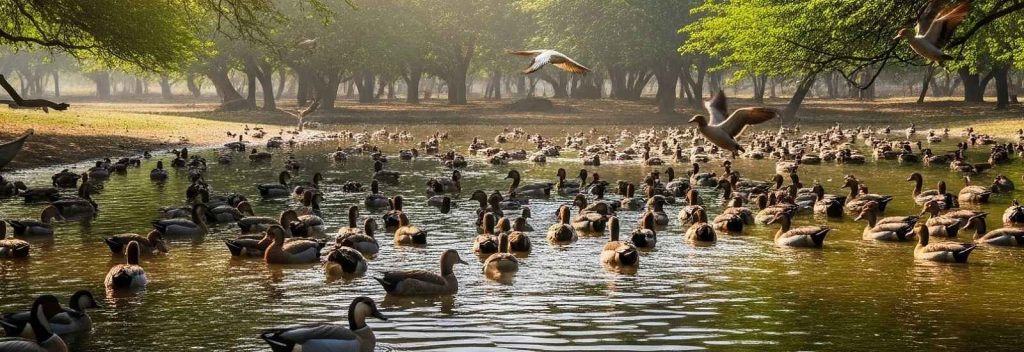
7). Leopard
Leopards also exist, though they are more evasive than tigers in the sanctuary. They are fast and elusive; they usually live in the crowded deep forests and are mostly spotted during dawn drives. Exploit the areas with rough outcroppings and dense vegetation.
Best Zones: Woods of Motipur and Nishangadha ranges
Best Time to Spot: Dawn and dusk
Safari Tip: Leopards are timid; if you are on safari, you will have a better opportunity of seeing leopards if you remain quiet.

Gangetic Dolphin: Bonus
The Gangetic Dolphin is the national aquatic animal of India, and it may occasionally be observed in the lower reaches of the Girwa River. These dolphins are also freshwater dolphins, and they sometimes appear to have an unforgettable moment during the safari.
The Girwa River (Boat Safari) offers the best viewing area.
Best Spotting Time: October to March, when the river is calm
Fun Fact: The echolocations are flying their way around and hunting like bats.
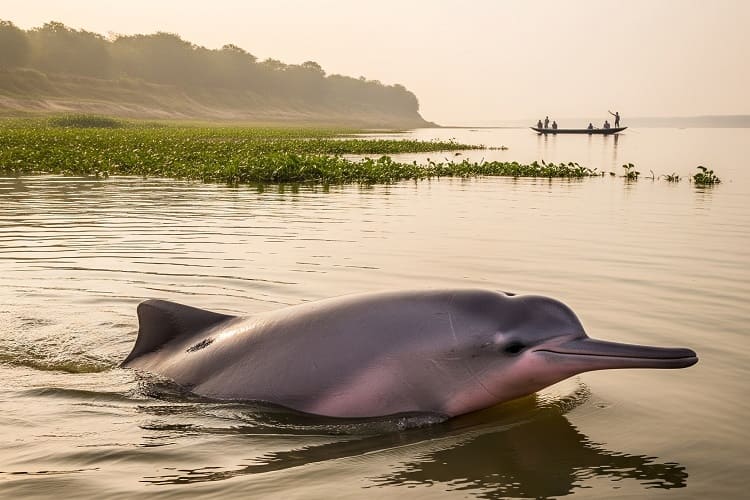
Final Thoughts and Conclusion
Katarniaghat Wildlife Sanctuary, the beautiful sanctuary located in the famous Dudhwa Tiger Reserve, is itself exclusive to the wildlife enthusiasts, as here one can explore a wide range of wild and magnificent animals in nature. It could be the strength of the Royal Bengal Tiger, the enigma of the Indian Rock Python, or the graceful flight of a Sarus Crane, but the sanctuary renders life to the wildlife in some awe-inspiring fashion.
In the process of planning your visit, you may also take the option of exploring the rest of the Dudhwa National Park, visiting the Kishanpur Wildlife Sanctuary, as well as the Pilibhit Tiger Reserve. All these reserves complement Katarniaghat with their different biodiversity and landscapes.
Katarniaghat has everything, including exciting safaris in gypsies, calm boat rides to amuse every type of wildlife lover. Therefore, bring along your camera, book your safari, and prepare yourself to take a very fulfilling safari into one of the cleanest and lesser-known wildlife sanctuaries of India.

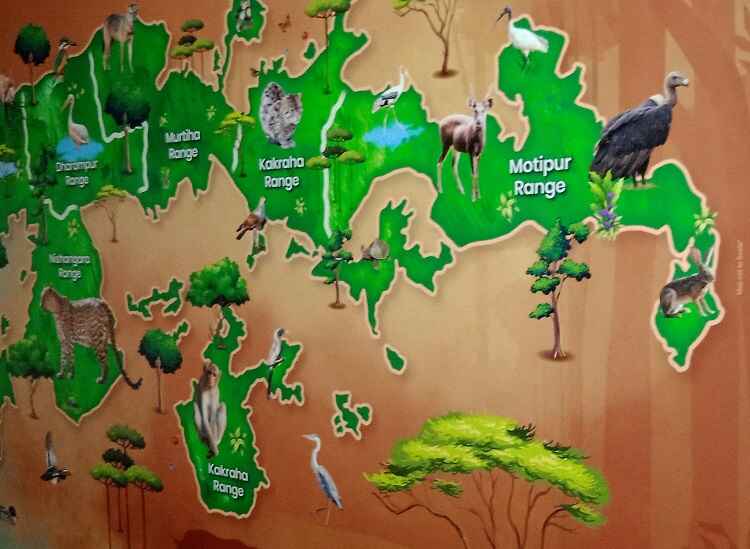
 How To Reach Katarniaghat
How To Reach Katarniaghat
